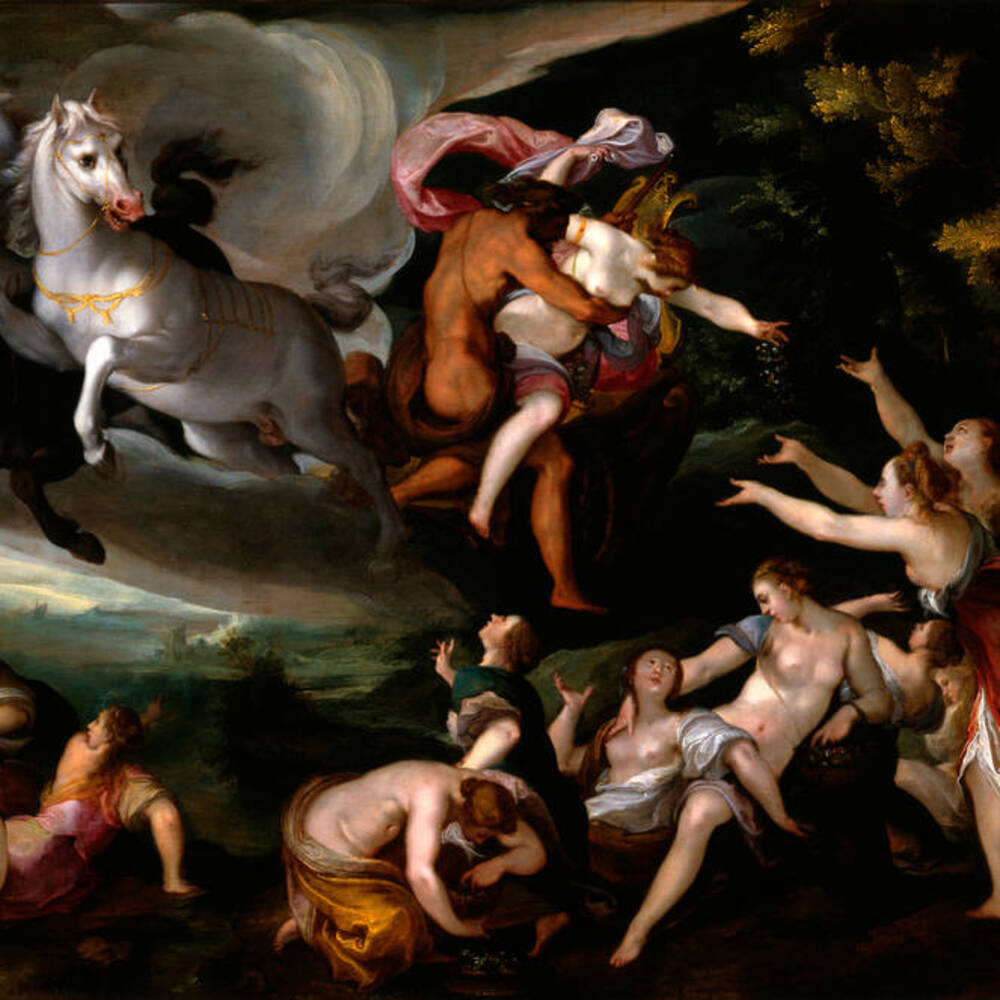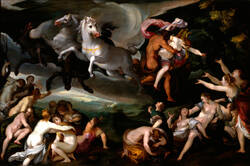In his Metamorphoses, Ovid described the abduction of Proserpine by the love-crazed Pluto. Viewed from below, four horses charge through the sky pulling a chariot. Descending from this, the god of the underworld dramatically snatches the daughter of Jupiter away from her female playmates. The dark sky already presages the consequences, when Proserpine’s mother Ceres will cause the Earth to be infertile. This painting on copper is one of the most famous works by this artist.
Further Media
In the Metamorphoses, the Roman poet Ovid recounts the story of the abduction of Proserpine.
Proserpine’s mother was Ceres, goddess of crops and fertility, and her father was Jupiter, Pluto’s brother. So, strictly speaking, the young woman’s freedom and physical integrity was robbed by her uncle. In Ovid’s account, Pluto could only be considered ‘of sound mind’ to a certain extent. Hit by one of Cupid’s arrows, he was – in a certain sense – fated to abduct Proserpine to Hades and make her his wife.
Afterwards, Ceres desperately searched the Earth for her daughter. When she heard of Proserpine living a miserable existence as the wife of the king of the underworld, her fury and despair knew no bounds. Not only did she command plants to stop growing, but – in her unbridled sorrow – she blighted everything in her path, leaving seeds infertile, cattle dead and the farmers dying with them. With things spinning out of control, the gods decided to step in and mediate. Since those eating the food of the dead in the underworld may never leave again, as long as Proserpine had not eaten anything in Hades, she could return to the world of the living. Unfortunately, though, Proserpine had eaten a few pomegranate seeds. In the end, a compromise was agreed. For six months of the year in spring and summer, Proserpine could live on Earth, but the remaining months, in autumn and winter, she had to stay with her husband Pluto in Hades. And the rhythm of their relationship still shapes the seasons today on earth.
- Location & Dating
- c. 1595
- Material & Technique
- Oil on copper
- Dimenions
- 63 x 94 cm
- Museum
- Gemäldegalerie Alte Meister
- Inventory number
- Gal.-Nr. 1971

